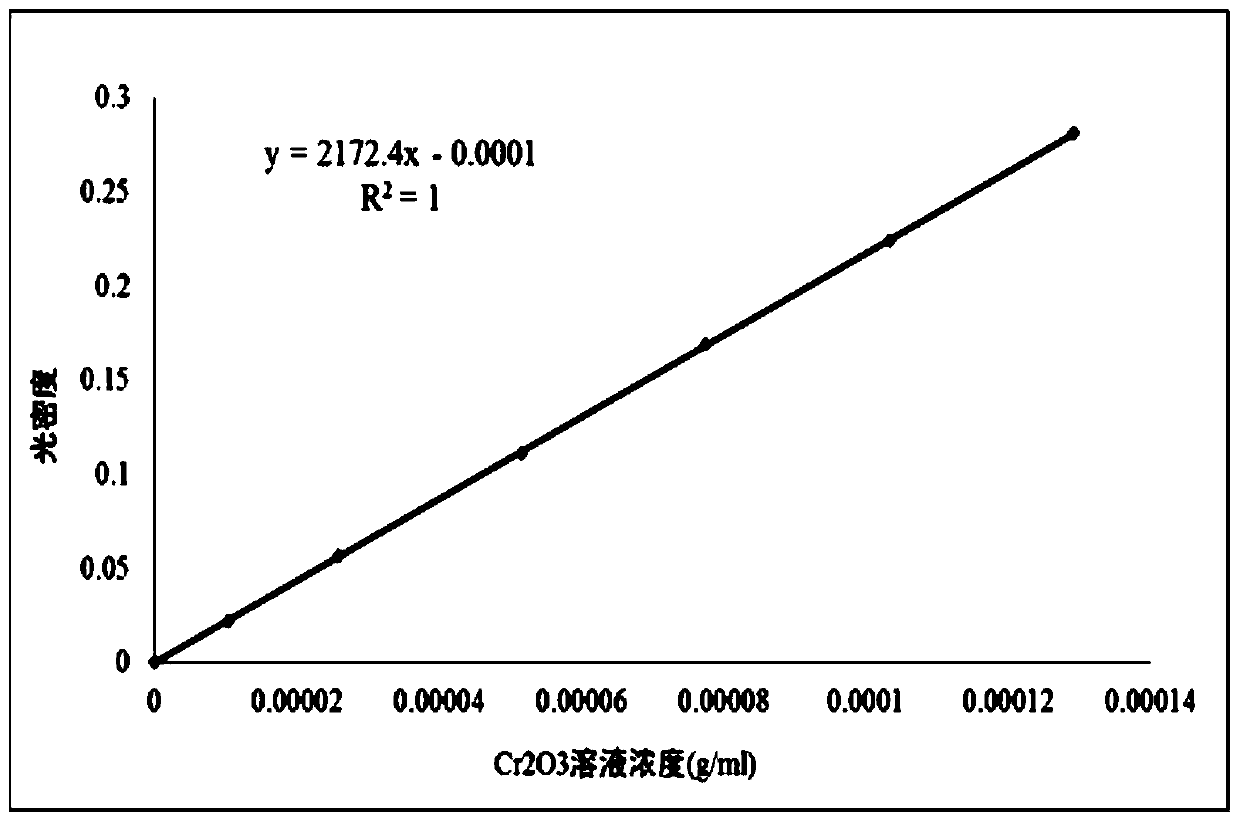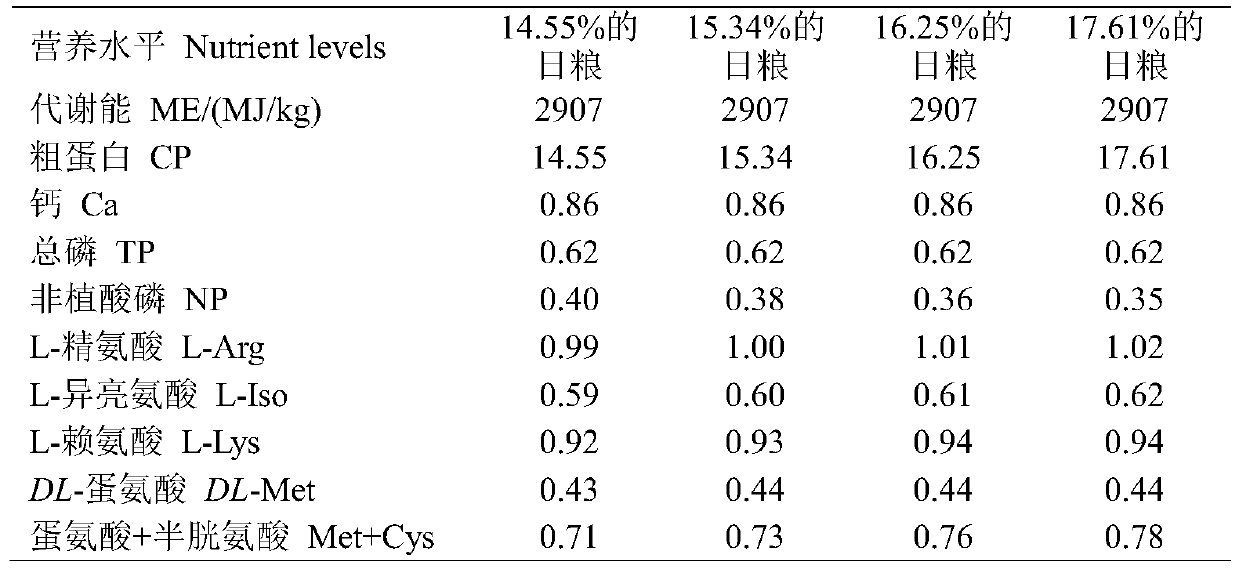Meat duck feeding method based on a three-layer three-dimensional cage
A three-dimensional, meat duck technology, applied in the direction of animal feed, animal feed, additional food elements, etc., can solve the problems of high nitrogen content in meat duck manure, the diet cannot meet the nutritional needs at the same time, and the high dietary nutrition, so as to avoid protein The effect of excess nutrients, full utilization, and reduction of the overall addition amount
- Summary
- Abstract
- Description
- Claims
- Application Information
AI Technical Summary
Problems solved by technology
Method used
Image
Examples
Embodiment 1
[0025] A method for raising meat ducks whose age is 21 to 42 days based on a three-layer three-dimensional cage, the method for raising meat ducks comprises that the protein content of the ration fed by the meat ducks in the first layer of three-layer three-dimensional cages is 16.25%; The protein content of the rations fed to the first and third layer meat ducks was 15.34%, of which:
[0026] The height of the first layer of the three-layer three-dimensional cage is 0.6m; the height of the second layer is 1.2m; the height of the third layer is 1.8m; the raising temperature in the three-layer three-dimensional cage is room temperature, and the humidity is 65%;
[0027] The diet of 16.25% protein content comprises the following raw materials in parts by weight:
[0028] 174.4g soybean meal, 690.6g corn, 68g rapeseed meal, 16g soybean oil, 13.9g calcium hydrogen phosphate, 11.8g stone powder, 10g premix, 3g salt, DL-methionine 1.6g, L-lysine 2.04g, L- Threonine 0.34g, L-isoleuc...
Embodiment 2
[0036] This embodiment is a method for raising meat ducks based on three-layer three-dimensional cages with a day age of 21 to 42. The method for raising meat ducks includes feeding the first layer of meat ducks in three-layer three-dimensional cages with a protein content of 17.61 %; The protein content in the rations fed by the second and third layers of meat ducks was 16.25%, of which:
[0037] The height of the first layer of the three-layer three-dimensional cage is 0.6m; the height of the second layer is 1.2m; the height of the third layer is 1.8m; the raising temperature in the three-layer three-dimensional cage is room temperature, and the humidity is 65%;
[0038] Protein content is that the diet of 16.25% is the same as the diet of protein content in embodiment 1 that is 16.25%;
[0039] The ration that protein content is 17.61% comprises following raw material by weight:
[0040] 193g soybean meal, 660g corn, 80g rapeseed meal, 20g soybean oil, 13g calcium hydrogen...
experiment example
[0050] Test design
[0051] 1,200 1-day-old Peking ducks were randomly divided into 60 pens with controllable ambient temperature, and 20 ducks were raised in each pen. The size of each pen was 200cm×120cm×40cm. The feeding period was 21 days. Pekin duck routine diet in the early growth period; at the age of 21 days, select 540 Peking ducks with consistent body weight and health, and divide the selected 540 21-day-old Peking ducks into 3 groups at random, and adopt embodiment 1 and 2 respectively Raise with the feeding method of comparative example 1, and each layer raises 10 in the raising process, 6 repetitions; The feeding period is 21 days old to 42 days old;
[0052] Experimental material and diet
[0053] The nutritional levels of the different protein content diets adopted in Examples 1, 2 and Comparative Example 1 are as shown in Table 1:
[0054] Table 1 Nutrient levels of diets with different protein contents
[0055]
[0056]
[0057] Feeding management
...
PUM
| Property | Measurement | Unit |
|---|---|---|
| Height | aaaaa | aaaaa |
Abstract
Description
Claims
Application Information
 Login to View More
Login to View More - R&D
- Intellectual Property
- Life Sciences
- Materials
- Tech Scout
- Unparalleled Data Quality
- Higher Quality Content
- 60% Fewer Hallucinations
Browse by: Latest US Patents, China's latest patents, Technical Efficacy Thesaurus, Application Domain, Technology Topic, Popular Technical Reports.
© 2025 PatSnap. All rights reserved.Legal|Privacy policy|Modern Slavery Act Transparency Statement|Sitemap|About US| Contact US: help@patsnap.com



